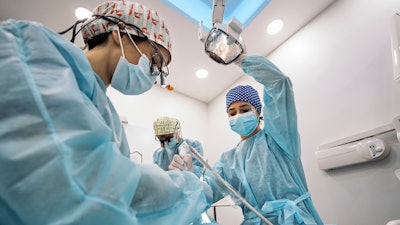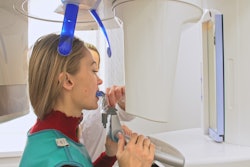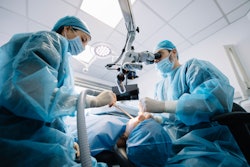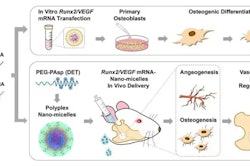
Researchers from the University of Pittsburgh have developed a device similar to an orthodontic wire that supports bone regeneration in mice, according to a study published on April 11 in Proceedings of the National Academy of Sciences.
A group led by Dr. Guiseppe Intini, PhD, of the University of Pittsburgh has developed an approach to promote bone regeneration in mice that does not require implanting bone tissue or biomaterials, the university said in a statement. The device stretches the skull along natural sutures, which then activates stem cells to repair the damage.
Bone injuries can occur as a result of trauma, congenital abnormalities, or surgery. Children under the age of 2 (and newborn mice) can heal damage to the bones that form the top of the skull, but adults cannot, Intini said.
The current treatment for skull damage is bone grafts or biomaterial implantation that act as scaffolds for the regeneration of bone, but these approaches can be risky. That's why Intini and colleagues investigated the use of an orthodonticlike device (PNAS Nexus, April 11, 2023, Vol. 120:16, e2120826120).
“In babies, the calvarial bones are not completely fused, so the sutures, where stem cells reside, are still open,” Intini explained. “We [explored] whether the unfused sutures had something to do with the bone regenerative capacity observed in babies and hypothesized that we could reverse engineer this in adults by mechanically opening the sutures to activate the stem cell niche and boost stem cell numbers.”
The team used a "bone distraction device" to apply a pulling force to the calvarial bones in mice. The force was strong enough to widen the skull sutures but not powerful enough to cause a fracture. The group then used single-cell RNA sequencing and live-imaging microscopy, finding that the number of stem cells in the expanded sutures of the animals quadrupled and led to bone regeneration.
The approach only worked in young adult mice (2 months old) but not in middle-aged animals (10 months old), the team noted.
“If you can effectively activate the stem cell niche, you can increase the number of stem cells and sustain regeneration of bone defects,” Intini said. “Remarkably, we showed that the defect can heal even if it’s away from the suture.”
The team plans to further assess the findings of this experiment to gauge new therapies for bone injuries, not only for the skull but also for fractures in long bones, like the femur.



















